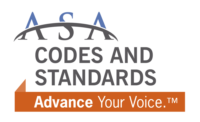ASA News
ASA advocates for members at recent model code hearings

Image courtesy of Shutterstock Photos
One focus of the Advocacy initiatives at ASA is the representation of its members and the entire PHCC and PVF supply chains in the development of model codes impacting those supply chains.
As background, model codes are developed by third-party non-governmental bodies using what is referred to as the consensus process. The model codes become mandatory requirements when adopted by a federal, state or local governmental body into regulation rather than develop their own requirements. The use of nationally developed model codes into national, state and local regulations helps to ensure consistent requirements are followed across the U.S. Consistent requirements result in a more efficient supply chain.
The major model codes published in the U.S. impacting plumbing, mechanical systems, fuel gas systems and fire safety, at both the commercial and residential levels, go through a three-year revision cycle. These model codes were open for revision in January 2024 and model code hearings were held in April and May to discuss proposals submitted for updated the codes. ASA was actively present at the model code hearings taking positions on proposals determined by the ASA Codes and Standards Committee comprised of representatives from ASA member companies. The committee asked ASA staff to take positions on 48 different proposals and the voting body at the hearings agreed with ASA on 85% of the proposals.
This high level of success is due to the significant amount of experience and technical expertise that the members of the ASA Codes and Standards Committee represents.
The model codes that were under review at the hearings were the following:
International Codes Council
- International Plumbing Code
- International Private Sewage Disposal Code
- International Mechanical Code
- International Residential Code
- International Fuel Gas Code
- International Fire Code
International Association of Plumbing & Mechanical Officials
- Uniform Plumbing Code
- Uniform Mechanical Code
An overarching goal of the codes and standards area of ASA Advocacy is to ensure the following: 1) A fair and open marketplace; 2) Ability to manufacture and distribute products in the market that are safe and protect public health. These two goals provide the overall strategy for the ASA Codes and Standards Committee when developing positions. The following summarizes key areas that were addressed in the model code proposals through the positions taken by ASA:
- ASA opposed several newly proposed definitions related to products produced and distributed by ASA members. The main reason for opposition was to prevent potential confusion in the marketplace due to unclear or inaccurate definitions and to also prevent the inclusion of specific product requirements that should not be stated in a definition but rather addressed in the product standard(s).
- There were several proposals in plumbing and residential codes asking for the reduction in water usage in plumbing fixtures. ASA opposed all these proposals because the change in requirement would go beyond the federal regulations. Manufacturers of plumbing fixtures voluntarily submit their products for certification to the voluntary program, WaterSense, operated by the U.S. EPA. The WaterSense requirements are typically set to ensure a 20% reduction in water use based on the current federal regulations. ASA supports the use of WaterSense for consumers who are looking for increased efficiency or local jurisdictions that might have a severe water shortage however, we oppose the adoption of lower water efficiency requirement, such as WaterSense, in a national model code because there is insufficient data that provides assurances that lowering the waste water flow from plumbing fixtures lower than federal regulations will not have a negative impact of the waste flow downstream of the fixture.
- ASA opposed several proposals that, if approved, would lead to unnecessary design restrictions or provide installation requirements inconsistent with the manufacturer’s installation instructions. In general, design requirements and installation needs are addressed in the national consensus product standard and should not be addressed in model codes. ASA supports the development of minimum design requirements protecting public health and safety while allowing the flexibility for design innovation.
- Some new products were proposed to be added to the model codes and in general, ASA supports the inclusion of new products allowing our members to distribute those new products to their customers. A new section was proposed for air source heat pump water heaters. ASA opposed the proposal due to technical errors however, ASA will be represented on a task group formed to work on correcting those issues.
The entire development cycle for all the codes referenced in this article continues through 2025. There will be more opportunity for public comments and providing oral testimony at future hearings held to further discuss proposals under consideration. ASA will be there representing it vendor, manufacture representatives and distributors throughout the process.
If you have any questions related to the code development process or would like to get involved on the ASA Codes and Standards Committee, please contact me anytime at jkendzel@asa.net.
Looking for a reprint of this article?
From high-res PDFs to custom plaques, order your copy today!







